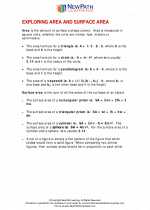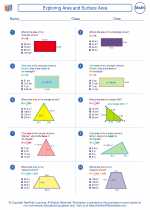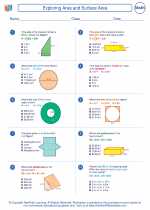Tangent in Geometry
In geometry, the tangent of an angle in a right-angled triangle is the ratio of the length of the side opposite the angle to the length of the adjacent side. It is one of the primary trigonometric functions and is denoted as tan(θ), where θ represents the angle.
Formula for Tangent
The formula for tangent is given by:
tan(θ) = Opposite / Adjacent
This formula can be used to calculate the tangent of an angle in a right-angled triangle when the lengths of the opposite and adjacent sides are known.
Properties of Tangent
Some important properties of the tangent function include:
- The tangent function is periodic with a period of π (180 degrees).
- It is an odd function, which means that tan(-θ) = -tan(θ).
- The tangent function is undefined at odd multiples of π/2 (90 degrees) due to division by zero.
Applications of Tangent
The tangent function has various applications in real-world problems, particularly in fields such as engineering, physics, and architecture. It is used to solve for unknown angles and distances in right-angled triangles, as well as in the analysis of periodic phenomena such as sound and light waves.
Study Guide
To master the concept of tangent, it is important to practice using the formula and understanding its properties. Here are some key steps to include in your study guide:
- Understand the definition of tangent and its relation to right-angled triangles.
- Practice using the tangent formula to calculate the value of the tangent of different angles.
- Explore the periodic nature of the tangent function and its behavior for different angle values.
- Solve problems involving real-world applications of the tangent function, such as finding distances and angles in practical scenarios.
- Review the properties of the tangent function, including its periodicity and behavior at specific angle values.
By following this study guide and practicing problems related to the tangent function, you can develop a strong understanding of this fundamental trigonometric concept.
.◂Math Worksheets and Study Guides Seventh Grade. Exploring Area and Surface Area

 Worksheet/Answer key
Worksheet/Answer key
 Worksheet/Answer key
Worksheet/Answer key
 Worksheet/Answer key
Worksheet/Answer key
 Worksheet/Answer key
Worksheet/Answer key
